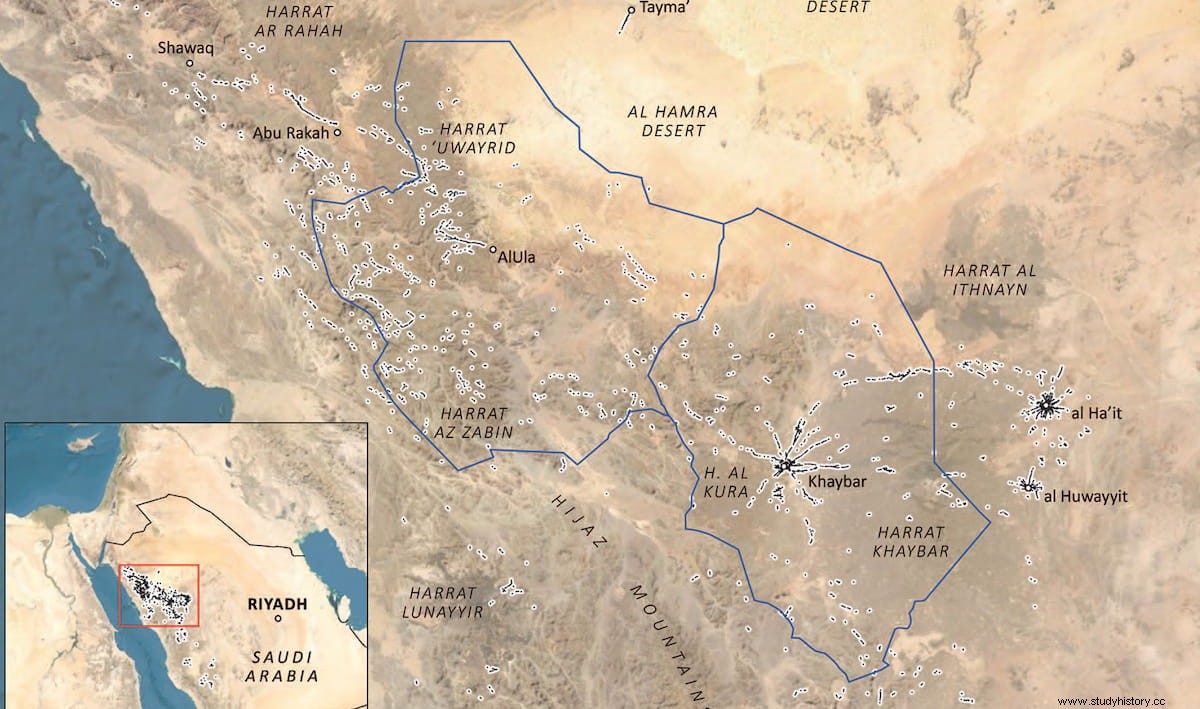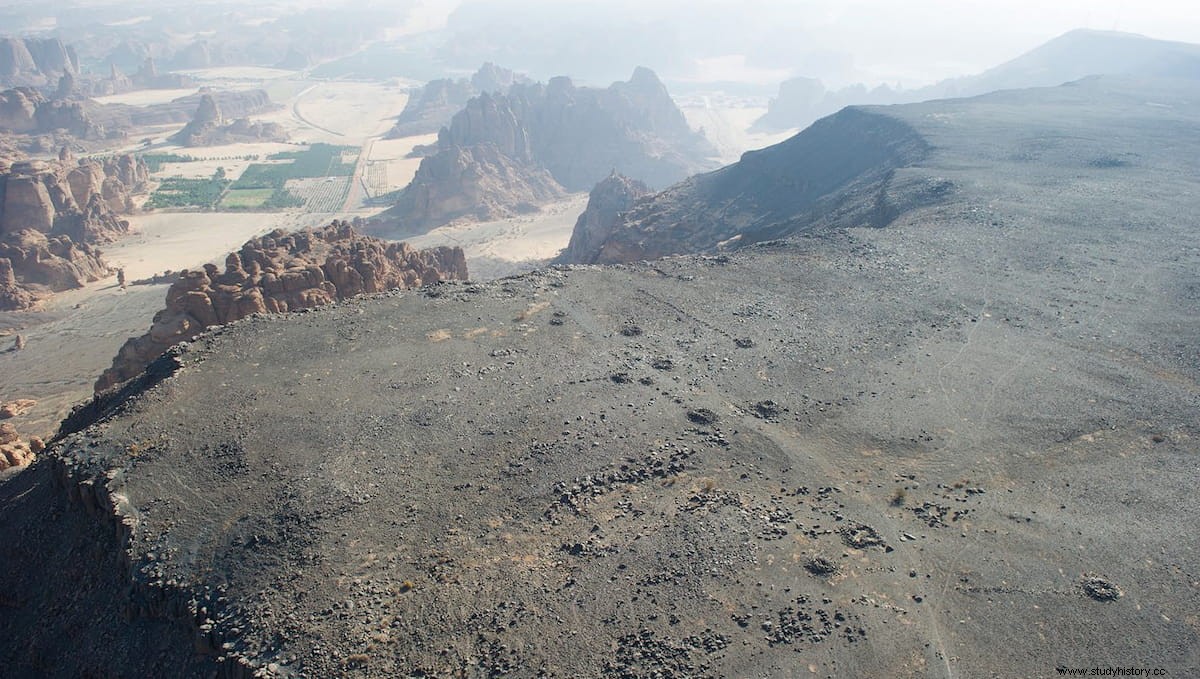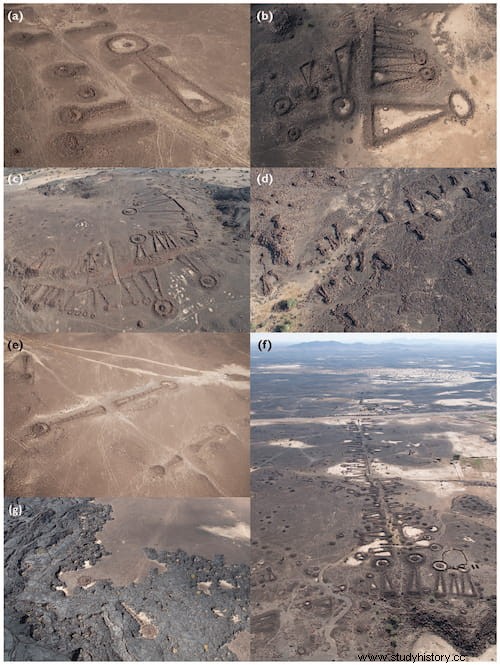Archaeologists from the University of Western Australia (UWA) have determined that peoples living in ancient north-western Arabia built burial avenues long-distance paths -large roads flanked by thousands of funerary monuments linking oases and pastures-, suggesting a high degree of social and economic connection between the populations of the region in the third millennium BC.
The publication of the findings in the journal The Holocene culminates a year of enormous progress by the UWA team, which works within the framework of the Royal Commission for AlUla (RCU), to shed light on the life of the ancient inhabitants of Arabia.
The existence of the funerary avenues suggests that 4,500 years ago complex social horizons existed in a huge swath of the Arabian Peninsula. The find adds to continuing advances by archaeologists working under the auspices of the RCU in understanding the hidden history of the ancient kingdoms and early societies of northern Arabia.

The UWA team's work is part of a broader effort that includes 13 archaeological and conservation project teams from around the world collaborating with Saudi experts in AlUla and neighboring Khaybar counties in Saudi Arabia.
Amr AlMadani, Director General of RCU, said:The more we learn about the ancient people of northwestern Arabia, the more we are inspired by how our mission reflects their mindset:they lived in harmony with nature, they honored their predecessors and reached out to the rest of the world. The work done by our archaeological teams in 2021 demonstrates that Saudi Arabia is a home for high-level science, and we look forward to welcoming more research teams in 2022 .
Dr Rebecca Foote, Director of Archeology and Cultural Heritage Research at RCU, said:Projects that have been conducting fieldwork in AlUla and Khaybar for more than three years, such as the UWA team, have started to publish their results, and it's great to see how analyzes of the data are shedding light on so many aspects of life from the Neolithic to the Bronze Age in northwestern Arabia. These articles are just the beginning of many publications that will advance our knowledge from prehistory to the modern age and will have important implications for the region as a whole .

The new paper is the UWA team's fourth publication in less than a year in a peer-reviewed scientific journal on research at AlUla and Khaybar:in August, in the journal Arabian Archeology and Epigraphy , the team dated the pendant-shaped tombs from the Khaybar oasis to the third millennium B.C., the first published radiocarbon test dating the tombs. This was also the first article in a peer-reviewed journal on the Bronze Age at Khaybar. The archaeological exploration of the mysteries of Khaybar is still in its infancy.
In April, the team wrote in Antiquity magazine that the monumental structures known as mustatils (megalithic prehistoric monuments of Arabia) are much older than previously believed, dating back to 5200 BC, and seem to have had a ritual function. In March, the team reported in the Journal of Field Archaeology that he had discovered the remains of the oldest known domesticated dog in Arabia.

The latest research from the UWA team, lead author Dr. Matthew Dalton, used satellite imagery analysis, aerial photography, ground survey and excavation to locate and analyze burial avenues in an area of at least 160,000 square kilometers in northwestern Arabia. They recorded more than 17,800 hanging graves in their main study areas, AlUla and Khaybar counties, of which some 11,000 were part of funeral avenues.
In both the basalt plains and the mountain passes, the densest concentrations of funerary structures in these avenues are found near permanent water sources. The direction of the avenues suggests that many were used to travel between major oases, such as Khaybar, AlUla, and Tayma. Other avenues fade into the landscapes surrounding the oases, suggesting they were used to move herds of domestic animals to nearby pastures during periods of rain.
Dr Hugh Thomas, Project Director, said:Research by the UWA team and our colleagues working at AlUla and Khaybar demonstrates the importance of the archeology of this region to our understanding of the Neolithic and the Middle Ages. Bronze throughout the Middle East. Our findings show that these structures linked several populated oases, located in a vast area, and that the funerary avenues were established about 4,500 years ago. They are especially dense around Khaybar, which is one of the densest and most visible burial landscapes in the world .
